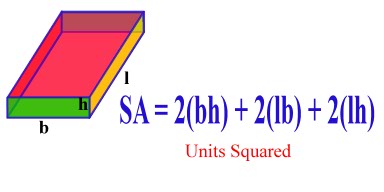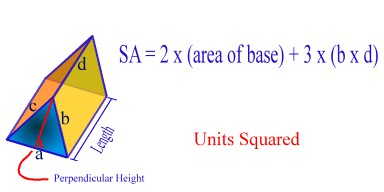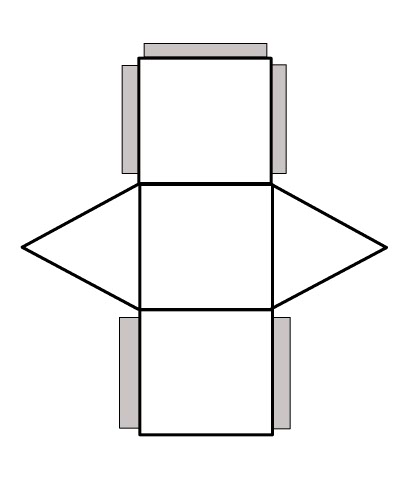Surface Area


Rectangular prism, we know that it is a prism because it has two bases top and bottom. For word problems I find it helpful to
draw it out so that I can visually see it. Especially on this one for me because I found it really hard on focusing on just reading the problem. I found a great site that explains a lot more along with examples. This site really helped me out visually on the explanation of lateral faces.
Total Surface Area:
The total surface area of a prism or pyramid is the combined area of its lateral faces
and its base(s). Similarly, the total surface area of a cylinder or cone is the combined
area of its lateral surface and its base(s). The total surface area of a solid can also be
thought of as the area of the solid’s net.
Lateral Area:
The lateral area of a prism or pyramid is the combined area of its lateral faces.
Similarly, the lateral area of a cylinder or cone is the area of its lateral surface.

 http://online.math.uh.edu/MiddleSchool/Modules/Module_3_Measurement/Content/SurfaceAreaandVolume-TEXT.pdf
Volume of three dimensional figures
http://online.math.uh.edu/MiddleSchool/Modules/Module_3_Measurement/Content/SurfaceAreaandVolume-TEXT.pdf
Volume of three dimensional figures
Here are great example of real life things that resemble volume shapes.

I think that its great to be able to point out things that resemble shapes to teach to students or to let them think what kind of things they see in real life that can resemble the volume shapes.
For me having to draw a visual shape of the volume helps me a lot along with using the formula. Here I have two great sites that talk about volume and greater depth of it, along with volume formulas.There is also videos that can help out a lot too such as teachertube.com. I know that with any explanation that I need either a visual picture of it or someone explaining it to me step by step which is definitely helpful.
http://www.asu.edu/courses/mat142ej/geometry/Geometry.pdf
http://jwilson.coe.uga.edu/emt668/EMAT6680.2003.fall/Montgomery/EMAT6690/Instructional%20Unit/Volume/InstructionalUnitVolume.html












